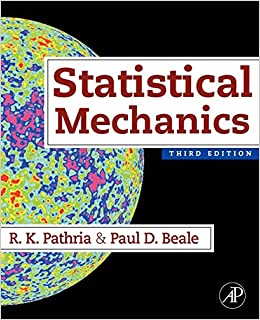Consider a pair of electric dipoles (boldsymbol{mu}) and (boldsymbol{mu}^{prime}), oriented in the directions ((theta, phi)) and (left(theta^{prime},
Question:
Consider a pair of electric dipoles \(\boldsymbol{\mu}\) and \(\boldsymbol{\mu}^{\prime}\), oriented in the directions \((\theta, \phi)\) and \(\left(\theta^{\prime}, \phi^{\prime}ight)\), respectively; the distance \(R\) between their centers is assumed to be fixed. The potential energy in this orientation is given by
\[
-\frac{\mu \mu^{\prime}}{R^{3}}\left\{2 \cos \theta \cos \theta^{\prime}-\sin \theta \sin \theta^{\prime} \cos \left(\phi-\phi^{\prime}ight)ight\} .
\]
Now, consider this pair of dipoles to be in thermal equilibrium, their orientations being governed by a canonical distribution. Show that the mean force between these dipoles, at high temperatures, is given by
\[
-2 \frac{\left(\mu \mu^{\prime}ight)^{2}}{k T} \frac{\hat{\boldsymbol{R}}}{R^{7}}
\]
\(\hat{\boldsymbol{R}}\) being the unit vector in the direction of the line of centers.
Step by Step Answer:






